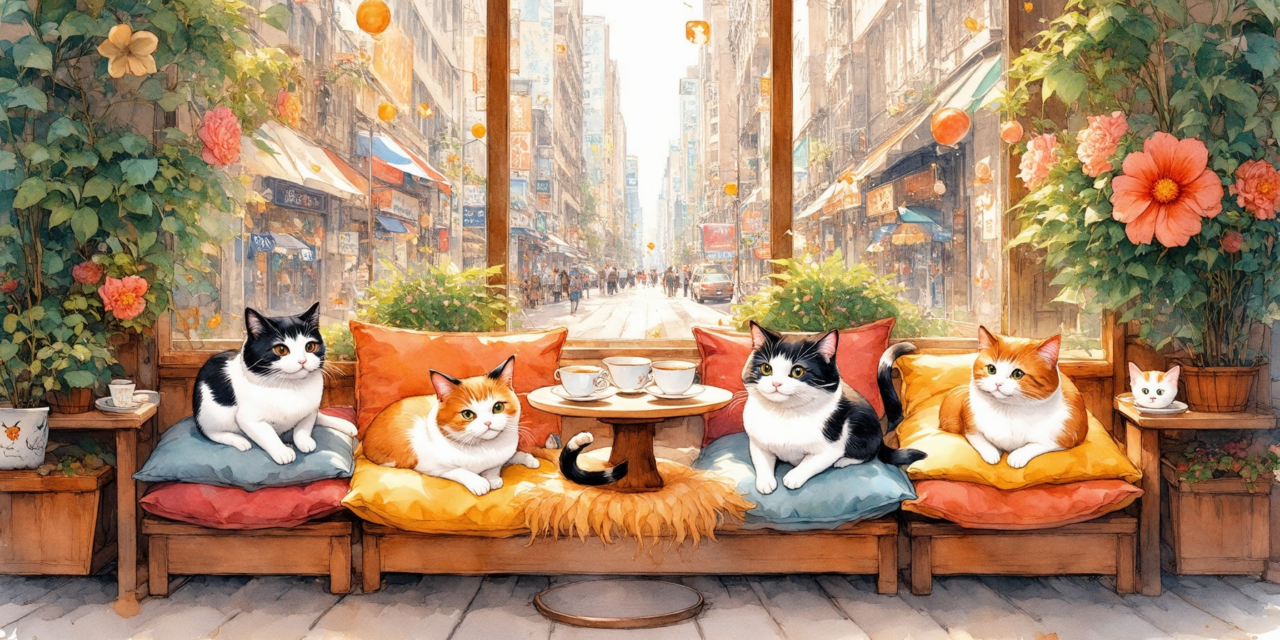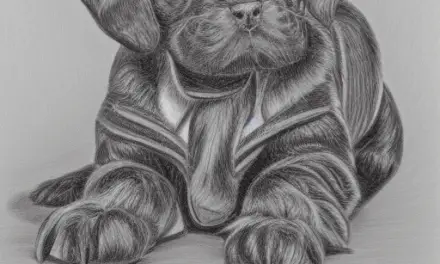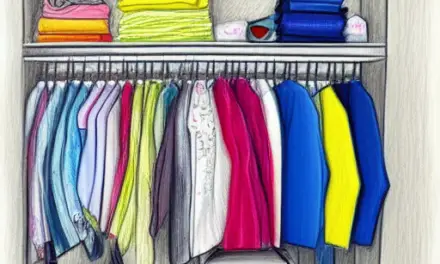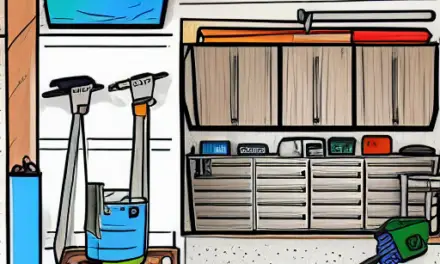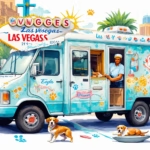Key Takeaways
- Neko Cafes: Experience the unique blend of cozy atmospheres and feline companionship, perfect for cat lovers seeking relaxation.
- Global Popularity: Neko cafes have gained international fame, appealing to both cat enthusiasts and those in search of therapeutic experiences.
- Welfare Concerns: Understand the challenges facing cat cafes, including cat well-being, legal regulations, and financial viability that can lead to closures.
- Legal Compliance: Know the importance of adhering to local health and animal welfare regulations for the successful operation of cat cafes.
- Ethical Practices: Most cat cafes prioritize the health of their residents by avoiding declawing and promoting responsible pet ownership.
- Diverse Menus: Enjoy a delightful array of beverages and snacks, with unique offerings in different regions, especially in Japan.
Welcome to the enchanting world of neko cafes, where feline friends and cozy atmospheres come together to create a unique experience for cat lovers. In this article, we will delve into the concept of neko cafes, exploring their rise in popularity across the globe and the cultural significance of “neko” in Japan. As we navigate through the reasons behind cat cafe closures and the complex legal status of these establishments, we will also address important ethical questions, such as whether cats in cat cafes are declawed. Additionally, we will provide insights on how to find a neko cafe near you and what to expect from a typical cat cafe menu. Join us as we uncover the delightful and sometimes challenging aspects of the cat cafe phenomenon, ensuring you are well-informed and ready to enjoy your next visit!
Understanding the Concept of Neko Cafes
Neko Cafes, originating from Japan, are specialized establishments where patrons can enjoy beverages and snacks in the company of cats. The term “neko” translates to “cat” in Japanese, highlighting the central theme of these cafes. These unique venues combine a cozy cafe setting with the playful and calming presence of cats, offering a relaxing experience that allows visitors to interact with feline companions while savoring their favorite drinks and snacks.
Concept and Atmosphere
Neko Cafes are designed to create an inviting atmosphere where guests can unwind. The decor often features comfortable seating and cat-friendly spaces, allowing the cats to roam freely. This setup not only enhances the cafe’s ambiance but also encourages interaction between the cats and visitors, making it a delightful experience for cat lovers. Many cafes also provide toys and climbing structures for the cats, ensuring they remain engaged and happy.
Popularity
The concept of Neko Cafes has gained immense popularity not only in Japan but also worldwide, attracting both cat lovers and those seeking a therapeutic experience. These cafes often feature a variety of cat breeds, creating an engaging atmosphere for guests. The rise of social media has further fueled this trend, as visitors share their experiences and adorable cat photos, drawing more attention to these charming establishments. Cities like Seattle and Tokyo have embraced the Neko Cafe phenomenon, with numerous locations catering to the growing demand for cat-centric leisure activities.
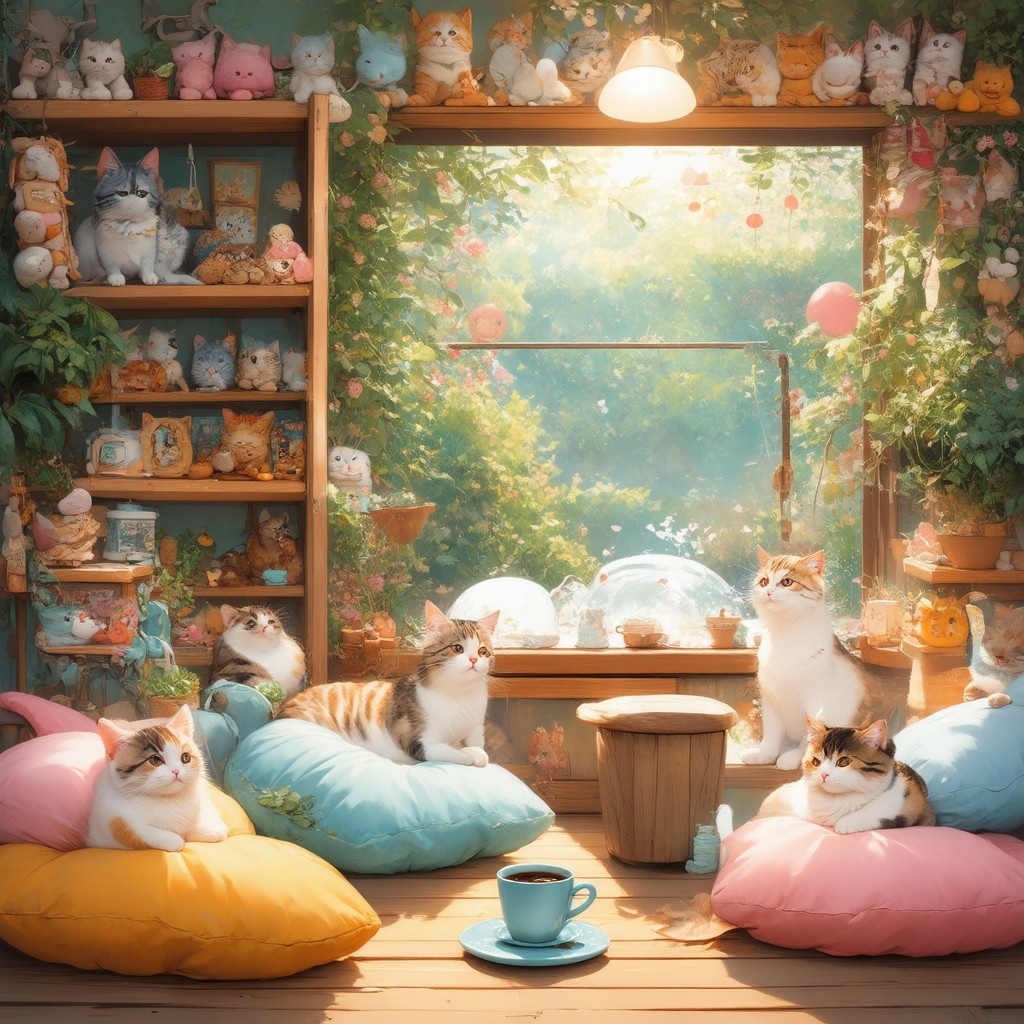
Why is the Cat Cafe Closing?
Cat cafés are closing primarily due to concerns about the well-being of the cats involved. According to animal welfare charities, these establishments can create stressful environments for felines. Key reasons for this include:
- Limited Hiding Spaces: Cats require safe spaces to retreat and hide when feeling overwhelmed. In a café setting, the lack of adequate hiding spots can lead to increased anxiety and stress among the cats.
- No Outdoor Access: Cats are naturally inclined to explore their surroundings. The absence of outdoor access restricts their ability to engage in natural behaviors, which is crucial for their mental and physical health.
- Resource Competition: In a confined space, multiple cats may compete for essential resources such as food and litter boxes. This competition can lead to some cats not eating enough or feeling unsafe using the litter area, which can exacerbate stress levels.
Research from the Journal of Feline Medicine and Surgery highlights that environmental enrichment is vital for feline welfare. Cats thrive in environments that allow them to express their natural behaviors, and cafés often fail to provide this. In conclusion, while cat cafés can offer a unique experience for cat lovers, the potential stressors for the cats themselves raise significant welfare concerns. Addressing these issues is essential for the future of such establishments.
Common Reasons for Cat Cafe Closures
Several factors contribute to the closure of cat cafés, with welfare concerns being paramount. Other common reasons include:
- Financial Viability: Many cat cafés struggle to maintain profitability due to high operational costs, including rent, utilities, and cat care expenses.
- Management Challenges: Effective management is crucial for the success of a cat café. Poor management practices can lead to inadequate care for the cats and unsatisfactory customer experiences.
- Public Perception: Negative publicity surrounding animal welfare can deter potential customers, impacting foot traffic and overall business health.
As the cat café industry evolves, addressing these challenges will be essential for sustainability and ensuring the well-being of the cats involved.
Impact of Regulations on Cat Cafes
Regulatory frameworks significantly influence the operation of cat cafés. Compliance with local animal welfare laws is crucial, and failure to adhere can lead to closures. Key regulatory impacts include:
- Health and Safety Standards: Cat cafés must meet specific health regulations, including cleanliness and sanitation, which can be costly and challenging to maintain.
- Licensing Requirements: Obtaining the necessary licenses to operate a cat café can be a complex process, often requiring inspections and adherence to strict guidelines.
- Animal Welfare Laws: Many regions have stringent laws regarding the treatment of animals, which can limit the number of cats allowed in a café or mandate specific care practices.
Understanding and navigating these regulations is essential for cat café owners to ensure compliance and promote a safe, healthy environment for both cats and customers.
Are Cat Cafes Legal?
Yes, cat cafes are legal, but their operation is subject to various regulations that ensure both food safety and animal welfare. The specific legal requirements can vary significantly by location, as local health departments and animal control agencies set the standards that cat cafes must adhere to.
- Health Inspections: Cat cafes must comply with food safety regulations, which include maintaining cleanliness and proper food handling practices. Regular health inspections are conducted to ensure these standards are met, similar to traditional cafes.
- Animal Welfare Standards: While there are general guidelines for animal welfare, individual cat cafes often establish their own standards. These may include ensuring that cats are well cared for, have access to veterinary care, and are not subjected to stress or overcrowding. Some regions may require specific licenses or permits for the operation of cat cafes.
- Local Regulations: It is crucial for prospective cat cafe owners to research local laws, as some cities may have stricter regulations regarding the number of animals allowed, zoning laws, and health codes. For example, in some areas, cat cafes may need to partner with local animal shelters to promote adoption and ensure the well-being of the cats.
- Public Awareness and Advocacy: As the popularity of cat cafes grows, so does the need for public awareness about responsible pet ownership and animal welfare. Many cat cafes engage in community outreach to educate patrons about the importance of adopting pets and supporting local shelters.
For more detailed information on the legalities surrounding cat cafes, it is advisable to consult local health departments or legal experts specializing in animal law. Additionally, resources such as the American Society for the Prevention of Cruelty to Animals (ASPCA) provide guidelines on animal welfare that can be beneficial for cat cafe operators.
Navigating Local Laws for Cat Cafes
Navigating local laws for cat cafes can be complex, as regulations differ widely across regions. Here are some key considerations for potential cat cafe owners:
- Research Local Laws: Before opening a cat cafe, it’s essential to thoroughly research the specific laws in your area. This includes zoning laws, health codes, and any restrictions on the number of animals allowed in a commercial setting.
- Licensing and Permits: Many jurisdictions require cat cafes to obtain specific licenses or permits. This may include a business license, health permits, and animal welfare certifications. Ensure all necessary paperwork is completed before opening your doors.
- Collaboration with Shelters: Some regions encourage or require cat cafes to partner with local animal shelters. This collaboration can help promote pet adoption and ensure that the cats in the cafe are well cared for and have a safe environment.
- Compliance with Health Regulations: Adhering to health regulations is critical. This includes regular inspections and maintaining high standards of cleanliness and food safety, similar to any other food service establishment.
By understanding and complying with local laws, cat cafes can operate successfully while ensuring the welfare of their feline residents and the safety of their patrons.
Are Cats in Cat Cafes Declawed?
Most cat cafes prioritize the well-being of their feline residents and typically do not declaw their cats. Declawing is a controversial procedure that involves the amputation of the last bone of each toe, which can lead to significant physical and behavioral issues for cats. According to the American Veterinary Medical Association (AVMA), declawing can result in pain, changes in gait, and increased aggression or litter box avoidance.
Many cat cafes adopt a policy of fostering cats that are already in need of homes, often from shelters or rescue organizations, which generally do not support declawing. Instead, these establishments encourage responsible pet ownership practices, such as providing scratching posts and regular nail trimming to manage claw-related issues. For those interested in learning more about the ethical considerations surrounding declawing and cat care, resources from the Humane Society of the United States and the ASPCA provide valuable insights. These organizations advocate for humane treatment of animals and promote alternatives to declawing, emphasizing the importance of understanding feline behavior and needs.
In summary, most cats in cat cafes are not declawed, reflecting a commitment to their health and well-being, and fostering an environment that respects their natural behaviors.
The Ethics of Declawing in Cat Cafes
The ethics surrounding declawing in cat cafes are a significant concern for many animal welfare advocates. Declawing is often viewed as an unnecessary and painful procedure that can lead to long-term consequences for cats. Cat cafes, which aim to create a welcoming and safe environment for both cats and visitors, typically align with these ethical standards by refusing to declaw their residents. This commitment not only enhances the quality of life for the cats but also promotes a positive image of responsible pet ownership.
By fostering an understanding of feline behavior, cat cafes can educate visitors about the importance of respecting a cat’s natural instincts. Providing alternatives, such as scratching posts and interactive toys, allows cats to express their natural behaviors without the need for harmful procedures. This ethical stance not only benefits the cats but also enhances the overall experience for visitors, who can enjoy the company of happy and healthy cats.
Alternatives to Declawing for Cafe Cats
Instead of declawing, cat cafes implement various alternatives to ensure the well-being of their feline residents. These alternatives include:
- Regular Nail Trimming: Keeping a cat’s claws trimmed can significantly reduce the potential for damage to furniture and belongings.
- Scratching Posts: Providing multiple scratching surfaces encourages cats to scratch in appropriate areas, satisfying their natural instincts.
- Behavioral Training: Educating staff and visitors about cat behavior can help mitigate issues related to scratching.
- Interactive Toys: Engaging toys can distract cats from scratching furniture and promote physical activity.
These alternatives not only protect the cats’ health but also foster a more harmonious environment in cat cafes. By prioritizing the well-being of their feline residents, cat cafes can create a positive experience for both cats and visitors, ensuring that everyone leaves with a smile.
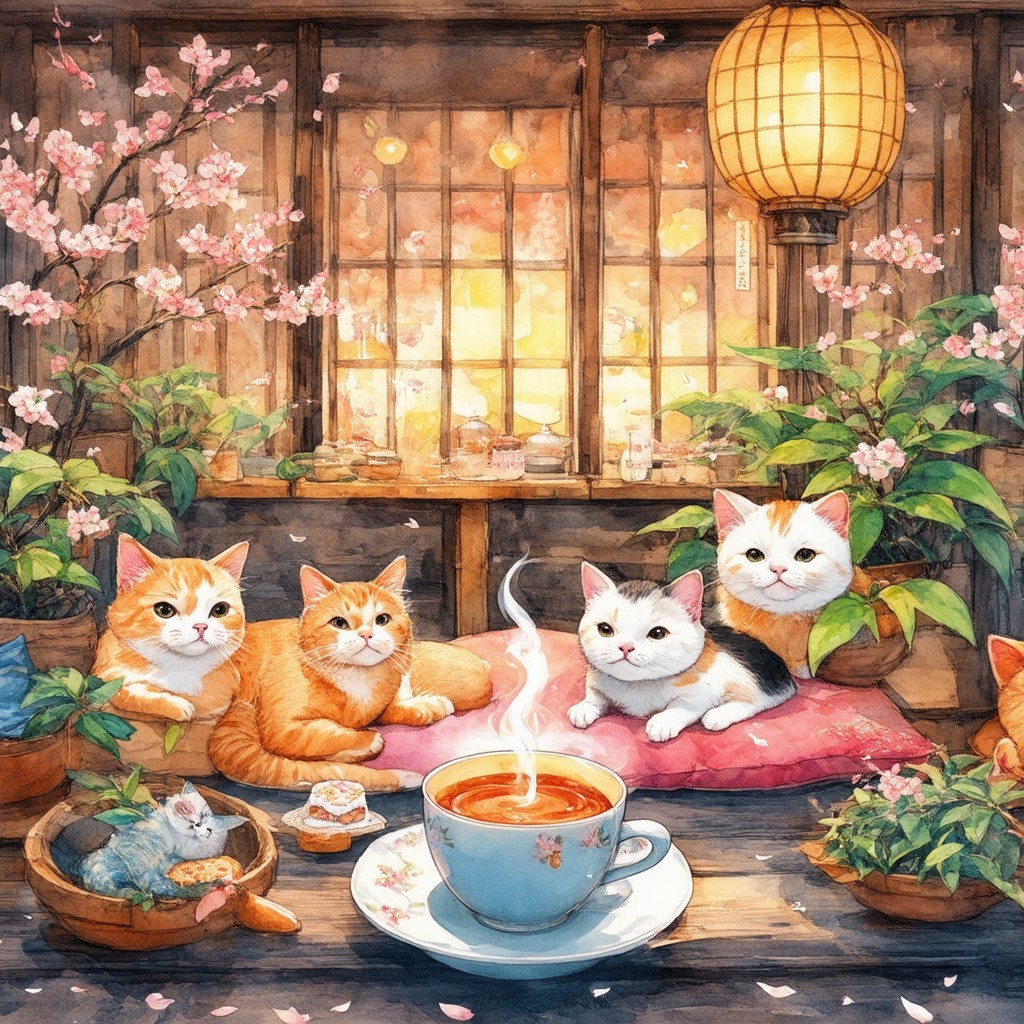
What the Heck is a Neko?
The term “neko” has become a cultural phenomenon, especially in Japan, where it signifies more than just a cat. Understanding the neko phenomenon involves exploring its roots and the various representations in popular culture.
Exploring the Neko Phenomenon in Japan
“Neko” (猫) is a Japanese term that translates directly to “cat” in English. Its usage extends beyond the literal meaning, particularly in the realms of anime and manga. In Japan, the neko phenomenon is deeply intertwined with cultural expressions, showcasing the affection for cats and their whimsical representations.
- Anime/Manga Context: In anime and manga, “neko” often describes characters that possess cat-like features, such as cat ears and tails. These characters are commonly referred to as “nekomimi” (猫耳), which literally means “cat ears.” This trend has led to a plethora of characters that embody feline traits, appealing to fans of fantasy and anthropomorphism.
- Kemonomimi: “Nekomimi” characters fall under the broader category of “kemonomimi” (獣耳), which translates to “animal ears.” This genre includes characters with various animal traits, enriching the storytelling experience in anime and manga.
- Slang Usage: In contemporary Japanese slang, “neko” can also denote the “bottom” or submissive partner in a homosexual relationship, particularly within the context of yaoi (boys’ love) culture.
- Examples of Neko Characters: Prominent examples include Himari Noihara from “Omamori Himari,” who showcases typical cat-like behaviors, and characters from the visual novel “Nekopara,” such as Vanilla and Chocola, who embody the neko archetype with their playful personalities.
Understanding the cultural significance of “neko” enhances appreciation for its representation in various media, reflecting both the whimsical and complex nature of these characters. For further exploration of the cultural impact of such characters, sources like Anime News Network and MyAnimeList provide extensive insights into their popularity and evolution in modern storytelling.
Neko Cats: Characteristics and Breeds
Neko cats, or cats that embody the spirit of “neko,” are often celebrated for their playful and affectionate nature. Various breeds are popular in cat cafes, each bringing unique characteristics that appeal to visitors. Here are some notable breeds often found in cat cafes:
- Scottish Fold: Known for their distinctive folded ears, Scottish Folds are friendly and adaptable, making them perfect companions in a cat cafe.
- Maine Coon: One of the largest domesticated cat breeds, Maine Coons are known for their sociable and gentle demeanor, often becoming favorites among cafe visitors.
- Siamese: With their striking appearance and vocal nature, Siamese cats are playful and affectionate, often seeking interaction with guests at a cat café.
- Ragdoll: Ragdolls are known for their docile and calm temperament, making them ideal for a relaxed atmosphere in a neko cafe.
These breeds, along with many others, contribute to the charm of neko cafes, providing a delightful experience for cat lovers. If you’re looking for a playful cat breed to adopt or simply want to enjoy the company of these adorable creatures, visiting a neko cafe can be a rewarding experience.
Neko Cafe Menu
At a neko cafe, the menu is as much a part of the experience as the adorable cat cafe cats that roam freely. Typically, you can expect a delightful mix of beverages and light snacks designed to complement the cozy atmosphere. Common offerings include:
- Coffee and Tea: From espresso to herbal teas, these cafes often serve a variety of hot and cold drinks. Specialty drinks like neko coffee or themed beverages are popular.
- Pastries and Snacks: Freshly baked goods, such as muffins, cookies, and cakes, are often available, providing a perfect pairing with your drink.
- Cat Treats: Some cafes even offer treats for the cafe cats, allowing visitors to engage with the felines during their visit.
For those visiting a neko cafe in Japan, you might find unique items on the menu, such as mocha cafe tokyo specialties or themed dishes inspired by local culture. Cafes like Meow Paradise and the official cat café organization often highlight local flavors and seasonal ingredients, making each visit a new culinary adventure.
Unique Menu Items at Neko Cafes in Japan
In Japan, cat cafes have taken the concept of themed menus to new heights. Here are some unique offerings you might encounter:
- Cat-shaped Desserts: Many cat cafes in Japan feature adorable desserts shaped like cats, including cakes and pastries that are as delightful to look at as they are to eat.
- Seasonal Specials: Depending on the time of year, you might find limited-time offerings that celebrate local festivals or seasonal ingredients, such as sakura-flavored treats in spring.
- Interactive Food Experiences: Some cafes provide opportunities for guests to create their own cat-themed dishes, enhancing the overall experience.
Whether you’re visiting a neko cafe seattle or exploring a cat cafe in tokyo, the menu is designed to enhance your time spent with the neko cats, making it a memorable outing for both cat lovers and food enthusiasts alike.
Neko Cafe Menu
Typical Offerings at a Neko Cafe
A neko cafe typically features a unique menu that combines delicious food and beverages with a cozy atmosphere where guests can interact with cat cafe cats. Common offerings include:
- Coffee and Tea: A variety of specialty coffees, teas, and cat-themed beverages are popular. Many cafes, like Cat Cafes, offer unique blends that cater to both cat lovers and coffee enthusiasts.
- Baked Goods: Freshly baked pastries, cakes, and cookies are often available, providing a sweet treat to enjoy while spending time with the cafe cats.
- Light Meals: Some cat cafes offer light meals such as sandwiches and salads, ensuring that visitors can enjoy a full dining experience.
- Cat-Themed Snacks: Many cafes create cat-themed snacks, such as paw-shaped cookies or catnip-infused treats for the resident cats.
For those looking for a specific experience, cafes like the neko cat cafe seattle and cat cafe tokyo often feature seasonal or themed menu items that reflect local culture and trends.
Unique Menu Items at Neko Cafes in Japan
In Japan, neko cafes are renowned for their innovative and themed menu items that enhance the overall experience. Some unique offerings include:
- Cat-shaped Pancakes: These fluffy pancakes are often served with adorable cat faces, making them a hit on social media.
- Cat Latte Art: Baristas create intricate latte art featuring cats, adding a personal touch to each beverage.
- Cat Treats: Specially made treats for the resident cats, often featuring ingredients like tuna or chicken, are available for purchase, allowing visitors to spoil the furry residents.
- Themed Events: Many cat cafes in Japan host themed events where unique menu items are introduced, such as Halloween or Christmas specials.
These unique offerings not only enhance the visitor experience but also reflect the cultural significance of cats in Japan, making each visit to a neko cafe japan a memorable one.

